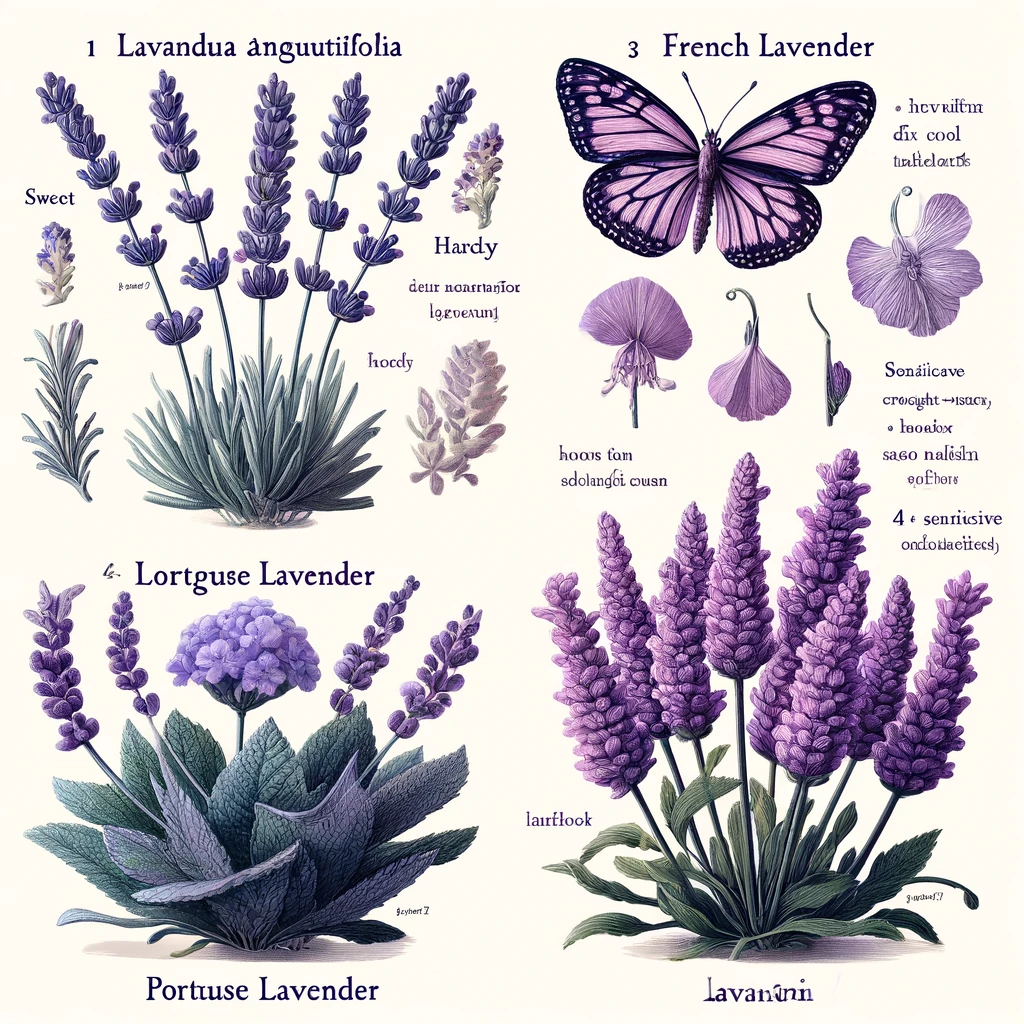
Types of lavender and their specific use
Lavender, known for its vibrant purple blooms and soothing scent, is a beloved herb in gardens and homes worldwide. Its uses range from aromatherapy to culinary applications, and it has a special place in traditional medicine. This detailed exploration will cover the different types of lavender and their specific uses, focusing on their botanical characteristics, traditional and modern applications, and practical advice for growing and utilizing this versatile plant.
Overview of Lavender
Scientific Name: Lavandula
Family: Lamiaceae
Lavender is a perennial plant native to the Mediterranean, Middle East, and India. It’s renowned for its fragrant flowers and has been used for centuries in various cultural rites, culinary applications, and healing practices.
Main Species of Lavender
1. English Lavender (Lavandula angustifolia)
Characteristics:
- Most commonly cultivated
- Known for its sweet, floral aroma
- Hardier and more drought-resistant
Uses:
- Essential oil in aromatherapy for relaxation and stress relief
- Culinary uses in desserts and teas
- Decorative and fragrant addition to gardens
2. French Lavender (Lavandula stoechas)
Characteristics:
- Shorter lifespan
- Distinguished by its butterfly-like petals atop each flower spike
- More sensitive to cold
Uses:
- Ornamental plant due to its distinctive look
- Used in potpourris and floral arrangements
- Not typically used for essential oil
3. Portuguese Lavender (Lavandula latifolia)
Characteristics:
- Also known as spike lavender
- Stronger, more pungent aroma than English Lavender
- Contains higher camphor content
Uses:
- Used in the production of lavender oil for antiseptic and anti-inflammatory properties
- Popular in herbal medicine for treating respiratory issues
4. Lavandin (Lavandula x intermedia)
Characteristics:
- A hybrid of English Lavender and Portuguese Lavender
- Larger and more robust plants
- Higher oil content
Uses:
- Widely used in commercial production of lavender oil
- Used in soaps, lotions, and other skincare products due to its high essential oil yield
Cultivation Tips
Soil and Planting:
Lavender thrives in well-drained soil with plenty of sunlight. It’s best to use sandy or gravelly soils with a pH between 6.5 and 7.5. Lavender should be planted in spring or early summer to establish its root system before the colder months.
Watering:
Lavender is drought-tolerant once established but will need regular watering during the first growing season to ensure healthy growth.
Pruning:
Pruning is essential to prevent woodiness at the base and should be done in early spring or after flowering. This promotes fresh growth and maintains the plant’s shape.
Traditional and Modern Uses
Aromatherapy:
Lavender oil is a staple in aromatherapy for reducing anxiety, improving sleep, and alleviating headaches.
Culinary Applications:
The flowers and leaves of English Lavender are used in baking, cooking, and tea-making, adding a floral flavor to dishes.
Medicinal Uses:
Traditionally, lavender has been used to treat ailments like insomnia, alopecia (hair loss), anxiety, and digestive issues.
Safety and Precautions
While lavender is generally safe for most people, it can cause allergic reactions or skin irritation in sensitive individuals. Lavender oil should be used diluted, and the plant should be consumed in moderation, especially in culinary contexts.
Conclusion
Lavender remains a multifaceted herb that enchants with its beauty and soothes with its fragrance. Whether grown for its aesthetic appeal, its aromatic properties, or its culinary delights, lavender offers a unique blend of uses that continue to make it a cherished plant in gardens and homes around the world.
This overview touches on the major aspects of lavender, but each species can be explored in greater depth in terms of cultivation, regional adaptations, and specific therapeutic benefits, illustrating the vast potential of this beloved herb.
Resumed in a table
A concise table summarizing the different types of lavender and their specific uses
| Type of Lavender | Botanical Name | Characteristics | Primary Uses |
| English Lavender | Lavandula angustifolia | Sweet, floral aroma; hardy and drought-resistant | Aromatherapy, culinary uses, decorative |
| French Lavender | Lavandula stoechas | Butterfly-like petals; sensitive to cold | Ornamental uses, potpourris, floral arrangements |
| Portuguese Lavender | Lavandula latifolia | Strong, pungent aroma; high camphor content | Antiseptic uses, herbal medicine for respiratory issues |
| Lavandin | Lavandula x intermedia | Hybrid, robust, high oil content | Commercial oil production, soaps, lotions, skincare products |
This table provides an at-a-glance overview of the main types of lavender and how they are typically used, focusing on their distinct characteristics and applications.

The illustration depicts four types of lavender, each labeled with its name and key characteristics. This botanical illustration highlights the unique features of English Lavender, French Lavender, Portuguese Lavender, and Lavandin. You can view the differences in their flower shapes and colors, which correspond to their specific attributes and uses.
